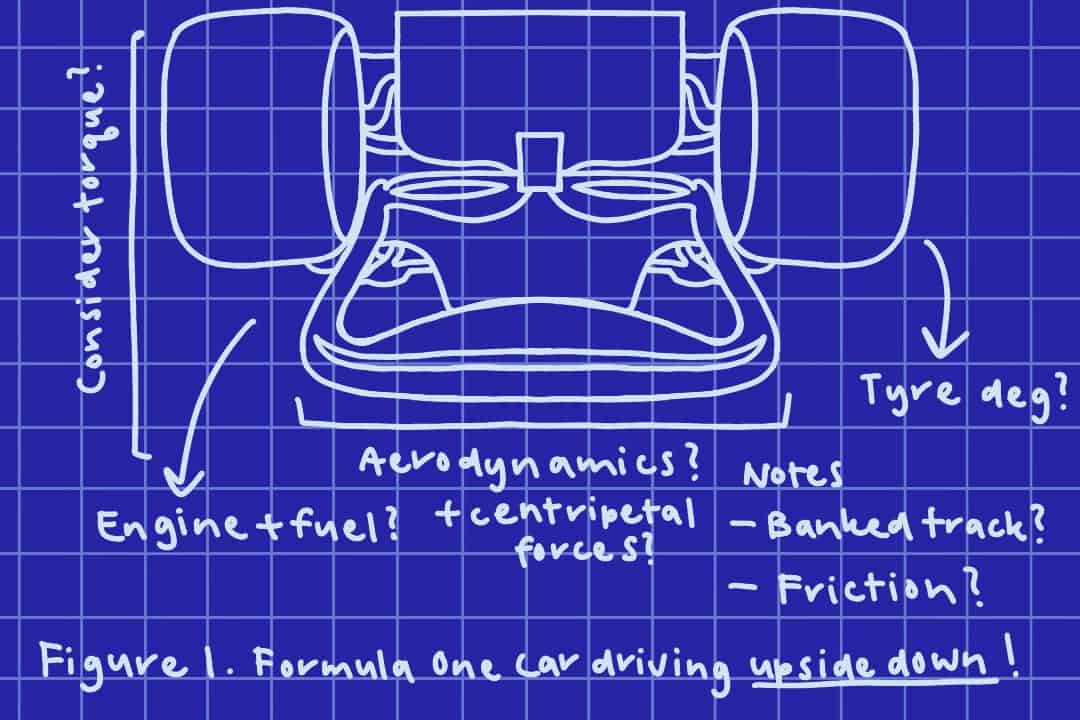With the quickest cars and best drivers on the planet, racing at uniquely challenging tracks around the world, Formula One is arguably the most exciting motorsport series there is today. Each year, millions of fans tune in, both live at the circuits and on TV, to cheer on their favourite drivers and teams as they compete for victory. Much of Formula One’s appeal comes from racing on the track, but there’s much more than meets the eye — the science behind the sport is equally crucial to its success.
One of the most crucial aspects of an F1 car is its aerodynamics. From the perfectly engineered front wings to the floor optimized for perfect airflow, these cars are designed to stick to the ground, improving their grip and performance around the track.
The basics of Formula One
The Formula One grid currently comprises ten teams, each fielding a lineup of two drivers. These twenty drivers compete for wins and the championship over the course of twenty-three races from March to November. The months in between are reserved for preparing and testing the car for the next season. Every year, the teams attempt to develop the fastest car they possibly can, and they rely on an expert team of engineers to work out the physics of the racing.
Downforce
One of the most important scientific concepts in Formula One is downforce. Downforce is the downward vertical aerodynamic force generated by the surfaces of a Formula One car, the opposite to lift, the force that planes employ to take off and stay in the air. At high speeds, the downforce created by airflow around the car’s body significantly exceeds the car’s weight. Formula One cars produce around 3.5 Gravitational force equivalents, or G-force, of aerodynamic downforce — equivalent to three and a half times their weight; since they weigh a minimum of 798 kilograms, this would amount to approximately 2793 kilograms of force exerted.
The high amounts of downforce that these cars generate allow them to pass through corners exceptionally quickly — at a speed of up to 310 kilometers per hour — making them the fastest racing cars in the world. These aerodynamic forces are so powerful that they may even allow Formula One cars to defy the laws of physics.
Could Formula One cars drive upside down?
Formula One cars generate so much downforce that they could, in theory, drive upside down. While this concept may seem outlandish at first, it is perhaps less impossible than we imagine.
Physicists believe that with favourable aerodynamic forces, such as those produced by Formula One cars, and by driving at high enough speeds, a car can drive at any angle — including upside down — for an indefinite amount of time. A 2019 report from the MIT Technology Review examined different possible methods for upside-down driving. It states that a Formula One car would be able to use its aerodynamic downforce to drive upside down if travelling at a sufficient speed, which they estimate to be around 200 miles per hour; others theorize that speeds as low as 145 kilometers per hour would be enough.
Other factors also come into play, such as centripetal force, which is the force acting on an object travelling along a circular path. If a car were to drive upside down around a circular track — as opposed to on the ceiling of a straight tunnel, for example — centripetal forces would further play a part in holding it against the track.
The verdict
Although it’s scientifically feasible that a Formula One car could drive upside down, it’s impossible to know until the theory is tested. When considering the possibility of driving upside down, it’s essential to account for the other relevant factors besides the sheer force of physics — for example, whether the fuel, oil tanks, engine, and brakes would still be able to work correctly if the car were upside down.
For now, driving upside down seems limited to the realm of action films and video games, but it may well become a reality in the future. Formula One teams are no strangers to a little bit of fun — they’ve taken their cars to the tops of skyscrapers for a round of celebratory donuts and through icy fields with spikes attached to their wheels — so, who knows?
Conquering gravity may just be next on the list for the daredevils of the world’s favourite racing series.


